
P.Cartwright/Shutterstock
Sure, there might be pubs around the world, but an English pub is its own beast. It's not a bar, it's not a restaurant, and it's not comparable to pubs in other countries, so it can be baffling for the uninitiated. If you're just visiting the U.K., you might not know about the common mistakes to avoid when ordering food in an English pub. At first glance, it all might seem straightforward. Get seated in a pub, order some food, eat. But there are lots of unspoken rules, dos and don'ts, and this can leave you looking like a bewildered tourist or waiting for a server who's never going to arrive. So, learning the common pitfalls is essential if you want your trip to be plain sailing.
I live in the U.K. and have visited more than my fair share of pubs, from upscale gastro pubs to spit-and-sawdust boozers. I also spent my younger years working behind the bar in pubs like The Magdalen Arms in Oxford and The Royal Sun near Woodstock, so I know all about the ins-and-outs of ordering. Whether you're planning a trip or you're just daydreaming, these are some of the errors to avoid when ordering food in an English pub. Not only will it help you get on the right side of the bar staff, it will help you get the kind of drink and meal you want so you won't walk away disappointed.
1. Waiting to be seated

Jwblinn/Getty Images
In a restaurant, you know what to expect. Usually, you'll wait to be greeted by a host and shown to your table. But, that's not the case in the majority of English pubs. Usual practice is to walk in, find a table, and sit down. Any reserved tables will have a sign on them stating the time they're reserved from.
When there aren't any obvious tables available, don't be afraid to take a nose around. It's not uncommon for pubs to have more than one room or tucked away nooks and crannies. Upstairs seating areas are less common but not unheard of. If you can't find a table, it's alright to grab a seat at the bar if there are bar stools there. You can also loiter for a while to see if a table frees up.
Generally, if someone's sitting alone and leaves to go up to the bar, they'll leave something in their spot to signify that they're still using the table. This might be a sweater draped over a seat or even, in the case of some trusting patrons, a phone left on the table. So, don't grab a table that looks like it might be occupied.
However, just to be confusing, there are some pubs where you wait to be seated. This is more common in gastropubs — food-led establishments that often have more in common with restaurants than traditional pubs. But, because this isn't typical, if you're expected to wait to be seated, there will usually be a sign as you walk in the door or someone ready to greet you.
2. Waiting for table service
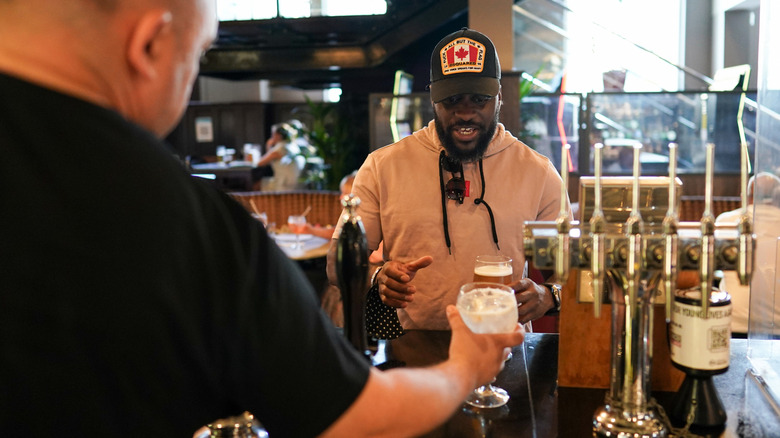
Ian Forsyth/Getty Images
You wouldn't sit down in a fast food restaurant and expect table service — unless you were at Burger King in the early '90s — but it seems to make sense that someone might come to take your order at a pub. Especially if it's one that offers an extensive menu. However, in most cases, waiting for table service is a mistake. You'll just end up sitting around for ages and getting frustrated.
In most English pubs, you order at the bar. Yes, even if you're ordering food. Just decide what you want, head up to the bar, and place your order. While some establishments will let you start a tab by putting your card behind the bar, it's more usual to pay when you order. That way, you can simply head out when you're ready to leave — which is a much less confusing option when you're a few pints in.
But, again, there are some exceptions. At gastropubs, there are often waiters who take your order. Generally, if you've had to wait to be seated, you can expect someone to come and take your order. Otherwise, just place your order at the bar.
3. Forgetting your table number
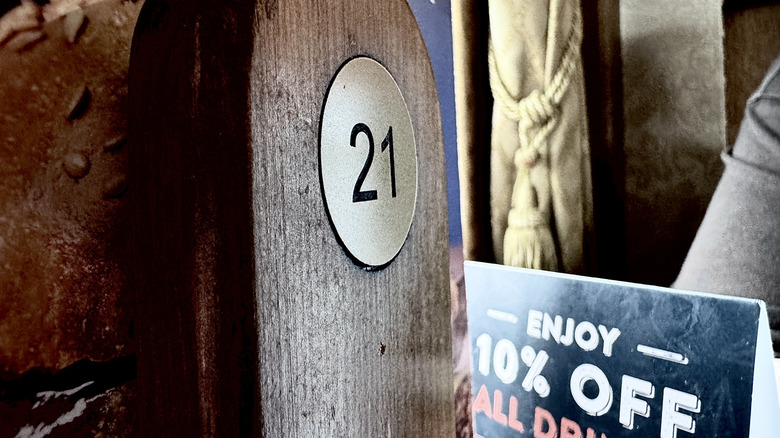
Mark Duffy/Getty Images
We've already explained that you usually make your way to the bar to order food in an English pub. However, we missed one key part of the equation: remembering your table number. In many boozers that serve food, there will be a number attached to the table. Often, this is a small engraved brass plaque screwed to one of the corners, but it can take other forms, so keep your eyes peeled.
If you don't want to exasperate the people working behind the bar, remember the number. Jot it down if you need to. As a former bartender, I can tell you how annoying it is when you ask someone their table number and they point their hand vaguely saying, "Oh, you know, it's just that table by the wall over there." Yes, usually we can figure it out, but it gives bar staff one more thing to do. And it can be especially frustrating when it's busy and it holds up the queue. So, do everyone around you a favor and remember that number. That said, don't fret if there isn't an obvious table number, as some watering holes give you a number once you've ordered.
4. Expecting every pub to serve food
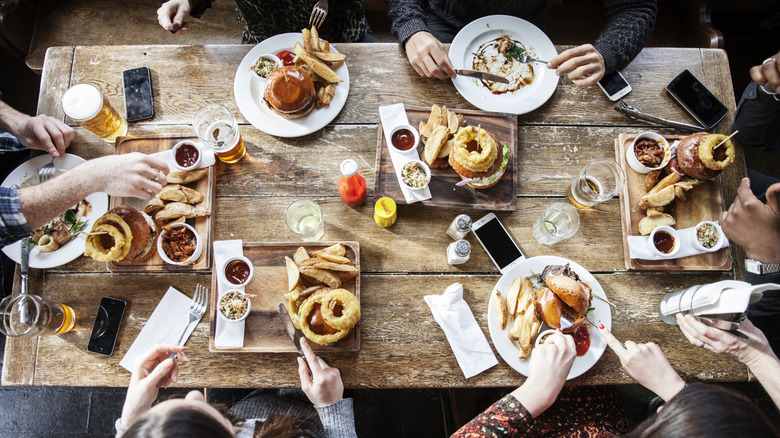
Henrik Sorensen/Getty Images
You've decided you want to get some pub grub for dinner, so you head to your nearest locale only to find there's no menu. What gives? Well, you may have made the common mistake of expecting every pub to serve food.
When you're just visiting the U.K., it's easy to get an idea in your head of what every pub is like. You might expect exposed stone walls, a roaring fire, and a menu of roast meats and Yorkshire puddings. But, the fact is, not every pub serves food. It's pretty common to be able to grab hot food in a British boozer, but it's not a given.
When there's no food menu, these establishments are sometimes known as "wet pubs" because everything they offer is wet. My favorite locale, The Star in Oxford, is a great example of a pub that doesn't serve food. There can be a range of reasons for this — no room for a kitchen, a lack of interest in offering food, or a desire to focus on quality drinks. But, the thing to remember is not to rock up to a pub and assume you'll be able to order a meal.
If you end up in a wet pub and you're peckish, there will be snacks behind the bar, such as chips and nuts. Some pubs will also let you order in food to eat there, sometimes for a small charge of a pound or two to cover the cost of staff inevitably clearing up extra mess.
5. Assuming food is served from opening until closing
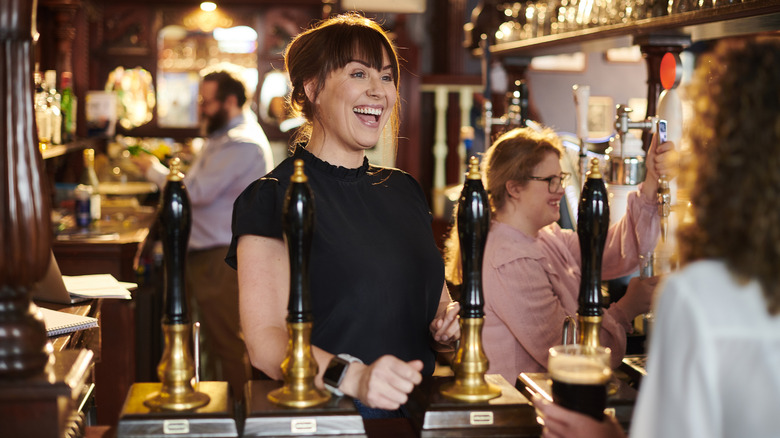
Sturti/Getty Images
Even once you've found yourself a pub that you're certain serves food, it's a mistake to assume that you'll be able to order any time from opening to closing. You might check the hours and see that it stays open from 12 p.m. to 12 a.m., but that doesn't mean you can order food all day.
More often than not, the pub opening hours are different from the kitchen opening hours. Most pubs are open until 11 p.m., with some having late licenses allowing them to stay open until midnight or 1 a.m. However, if you're expecting to be able to order fish and chips or a burger in the wee hours of the morning, you'll end up disappointed.
Pub kitchens often close around 9 p.m., so you'll have to get your orders in before then. In some cases, they also do a lunch service and a dinner service, with the pub staying open for drinks in between. So, you might only be able to order food between 12 p.m. and 3 p.m., and then again between 5 p.m. and 9 p.m. To avoid going away hungry, always check the kitchen times.
6. Thinking traditional pub food is always on offer
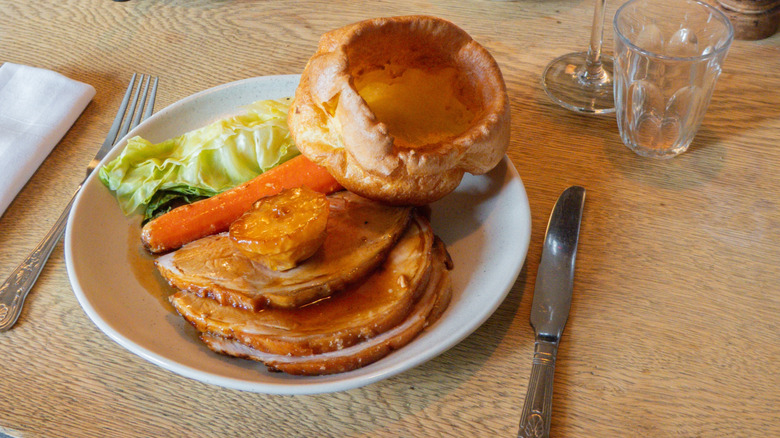
ninolari12/Shutterstock
What comes to mind when you think of pub food? Perhaps you think of a roast dinner or British classics like shepherd's pie, fish and chips, or bangers and mash. Sure, some locations offer these kinds of dishes, but it's a mistake to assume that traditional British pub food will always be available. Menus can vary widely and might not have the kinds of dishes on them that someone unfamiliar with English pubs might expect.
Classic but modern pub grub often includes burgers, steaks, gammon and eggs, and pies served with mash or chunky chips. Roasts are usually reserved for Sundays, when many pubs have an alternative menu. However, an international bent to the menu is pretty typical these days. You're more likely to find dishes like lasagna, risotto, or curry on a pub menu than some of the less fashionable classic British foods like cottage pie or Lancashire hotpot.
However, you may turn up to a pub to find it has a completely different menu from what you expect. For instance, The Golden Lion in Todmorden serves some of the best Thai food I've eaten in the U.K., but is a basic British boozer in all other ways. While, you might not expect to turn up to East Oxford neighborhood pub The Oxford Blue and find a menu consisting of vegan small plates and pizzas. Basically, you never know what kind of food you're going to find in a pub, so if you want traditional fare, check the menu ahead of time.
7. Not reserving a table at busy times
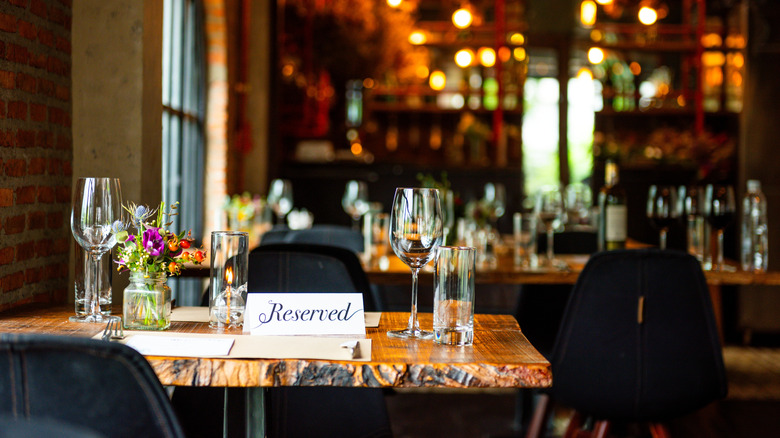
Rawpixel.com/Shutterstock
Pubs seem pretty casual, and many are, so it makes sense to assume that you wouldn't need to make a reservation. Now, in many cases you don't, but if you're heading to a pub at a particularly busy time, it's a good idea to check whether you can book a table. It isn't an option at all pubs, but when you can reserve a table, we'd recommend it — with some provisos.
If you're heading to a pretty standard pub in an average town on a weeknight or a weekday lunchtime, there's really no need to book. The likelihood is, there will be plenty of tables to choose from when you show up. But on a Friday or Saturday night, pubs come to life. If you turn up during the post-work rush, you might end up disappointed, unable to find somewhere to sit. The same goes for lunchtimes on a weekend — especially Sunday lunchtimes at pubs that serve a good roast.
You may also need to book if you're heading to a notably beautiful or historic pub, especially in touristy areas like the Cotswolds or the Lake District. Even on weekdays, these can be busy, particularly during the peak summer season. A quick check online will tell you whether or not booking is an option. Some pubs prefer a strict walk-ins only system, while others are happy to reserve tables.
8. Raising a hand to flag down staff

Drazen Zigic/Getty Images
While it's perfectly acceptable in some countries and contexts, it's considered rude in an English pub — and in many British eating establishments — to raise a hand to flag down staff if you need something. So, what to do if there's something wrong with your food or you want something extra depends on the type of pub you're at.
If you're in a regular pub where you placed your order at the bar, the best thing to do is to head back there for assistance. Need another drink or some sauce? Go back to the bar, wait your turn, and make your request. It's likely that you will have paid when you made your order, but if you started a tab, you'll need to go back up to the bar to pay before you leave.
On the other hand, it's fine to call a waiter over to you when you're in a pub that offers table service. Just don't wave your hand to get attention or you'll end up everyone's least favorite customer. Instead, try to make eye contact. When you do, a nod and a smile will usually bring someone over to your table to check in.
9. Not waiting for your drink at the bar
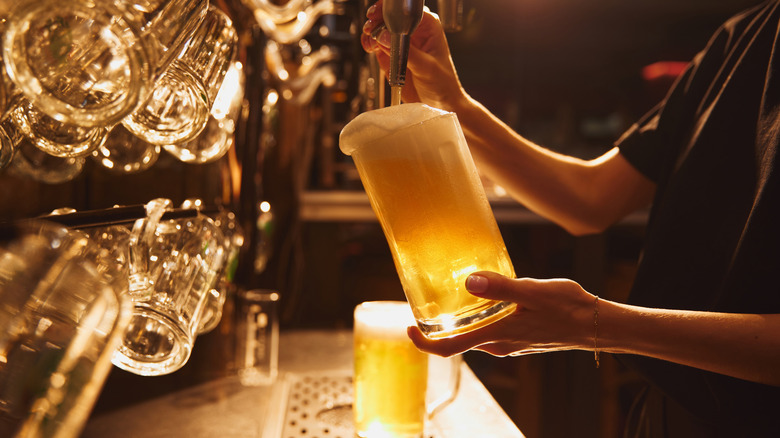
Master1305/Shutterstock
Ordering at the bar can seem straightforward, but there are still some potential mistakes to avoid there. One of them is not waiting for your drink after you've ordered. This is a natural misstep that some people don't realize they're doing — making assumptions about the way service works.
While it's fine to order food and drinks separately, you might naturally find yourself sitting down, making your decision, and then going to order both at once to save an extra trip. When you do this you'll give your table number and make your payments for the food and drink. The food, of course, will be brought over to your table when it's ready. So, by extension, some folks think that their drinks will also be brought to them.
However, this isn't the way service works in pubs. There isn't a backlog of drinks to be made. Rather, the person who took your order will mix your drinks or pull your pints right away. So, the right thing to do is stick around for a minute or two then carry your drinks back to the table. If you've got more drinks than you can carry, either ask whether they have a tray you can use or ferry the first ones back to the table while your bartender finishes making the others.
10. Forming a line at the bar
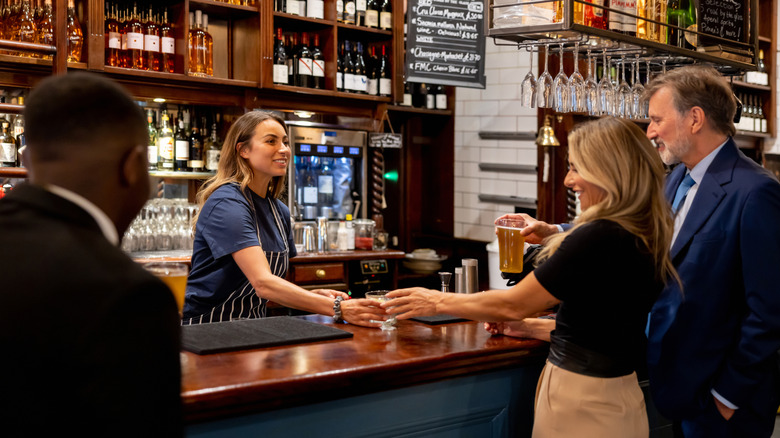
Andresr/Getty Images
Yes, British people love queueing but the way we line up at a bar is a bit of a curveball. There's a very particular way of queueing at the bar in a pub, which might sound chaotic to those who aren't familiar with it. However, it's all part and parcel of English pub culture, so just go with it.
When there's one person standing at the bar, your instinct is probably to line up behind them, forming an orderly queue in true British style. However, this is the one time English people will give you the stink eye for queueing up nicely. If you try to form a single long line, it's actually annoying for staff. Bar areas in pubs are usually small, and you'll quickly run out of space for this kind of line and folks queueing will end up in the way.
So, how it works is that you just kind of bundle in. If there's space along the bar, stand there. If there's not, start forming a second row behind the first one. Also, take a mental note of who was there before you. At less busy times, bar staff will often have noted to themselves who the next person to serve is. But, when it's packed, they'll ask "Who's next?" and the next person in the queue will identify themselves. It might seem like nobody knows what's going on, but it's a finely tuned system we're all on board with as a nation.
11. Snapping your fingers to get the attention of the person behind the bar
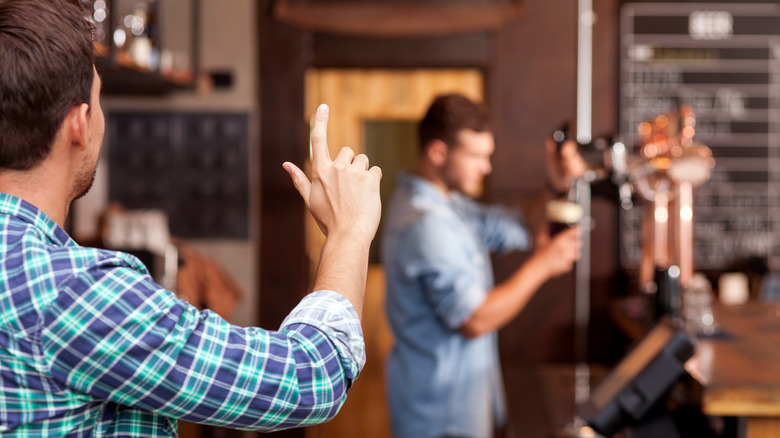
Yakobchukolena/Getty Images
You're waiting to be served and the person behind the bar hasn't noticed you, what do you do? If you'd snap your fingers or call out "excuse me," you're making a mistake. These actions would quickly get you labeled as rude or obnoxious.
Instead, you should try a more subtle approach, the specifics of which all depends on the context. If the bartender is busy making someone else's drinks or taking care of other tasks behind the bar, give them a minute. When they're done, they'll serve you — or the next person in line if somebody was ahead of you.
If they're not busy, but they haven't come over, they may be giving you a chance to look at the available drinks, waiting for a sign that you're ready. In this case, try to make eye contact. When you do, a smile or a small nod will likely do the trick and they'll ask you what you're having. However, if they're not busy and they don't appear to have noticed you yet, it's fine to say "hi" — or "alright, mate" should you want to try out your newly acquired British slang — to politely get their attention.
12. Expecting a non-smoking section in the garden
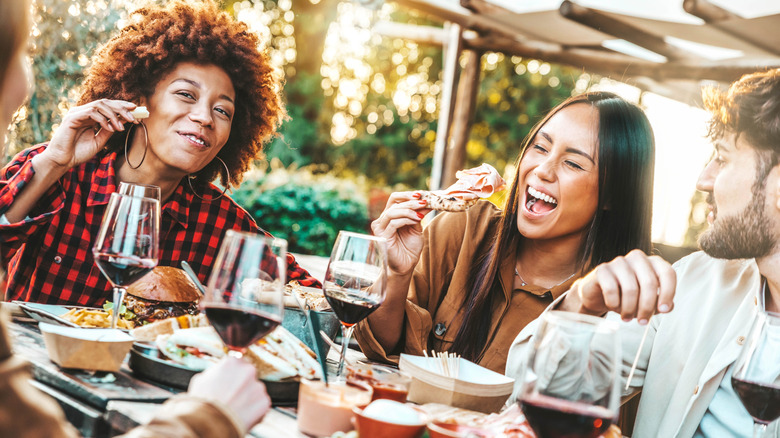
DavideAngelini/Shutterstock
When the weather is nice, it's foolish not to head to a pub garden. Buzzy and sometimes beautiful, they're the heart of pub culture in the summer. But it's a mistake to expect that there will be a non-smoking section in the garden. Sure, it might be off putting if someone's smoking right next to you while you eat food, but for better or for worse, it's all part of the experience.
There was talk of a smoking ban in U.K. pub gardens, but this idea was overturned when pub owners said they'd lose too much business and likely go bust. Smokers often complain that they're banished to the freezing garden all winter, as smoking isn't allowed inside pubs, but when summer comes, folks complain about them smoking outside, too. We can see why that might be frustrating for patrons that smoke, even if the scent of tobacco wafting over your sticky toffee pudding isn't all that appealing.
So, when you're eating in a pub in the summer, remember that you won't find a non-smoking section in the garden and choose where to eat accordingly. Don't choose to sit outside and then complain to the bar staff or your fellow customers. People are allowed to smoke in pub gardens, even if you don't like it.



